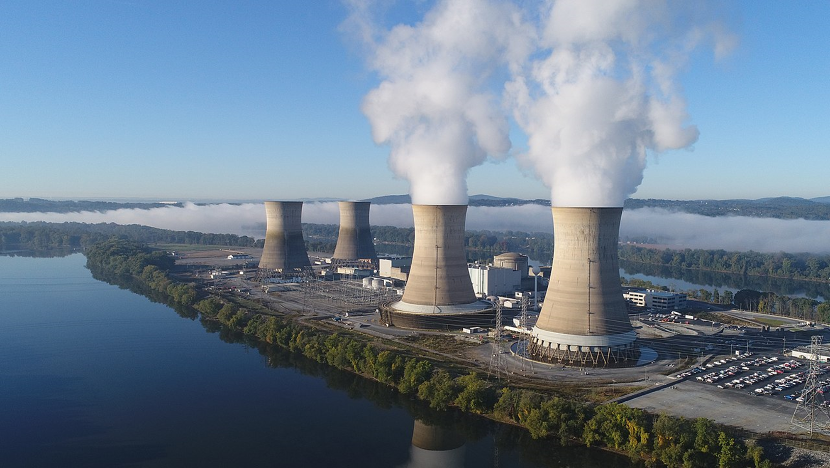“Although no one can go back and make a brand new start, anyone can start from now and make a brand new ending.” — Carl Bard
Constellation Energy just signed a 20-year deal with Microsoft to provide clean energy—or at least carbon-free energy—from Unit 1 of the Three Mile Island Nuclear Plant. The plan is to restart Unit 1 in 2028, assuming that the U.S. Nuclear Regulatory Commission (NRC) approves the permit application, which Constellation Energy hasn’t filed yet. Constellation Energy shuttered Unit 1 in September 2019 for “economic reasons.” Unit 2, which was the center of the partial meltdown on March 29, 1979, that released radioactive gases to the environment, is not part of the plans for restart.
As you might imagine, there are some who are horrified at the idea of restarting Three Mile Island. No wonder that Constellation Energy is planning to rename the facility as “The Crane Clean Energy Center.” Who can be opposed to clean energy?
“They’re restarting Three Mile Island? God, I hope they are planning to do a PSSR.”
A PSSR?
The NRC’s approval will depend on a number of things, including a review of Constellation Energy’s plans for protecting safety and the environment. These plans may or may not include something called a PSSR. Nuclear plants aren’t covered under OSHA’s Process Safety Management (PSM) Standard, 29 CFR 1910.119., which requires a PSSR—a Pre-Startup Safety Review. A new plant covered under PSM would require a PSSR. An existing plant being restarted? Maybe not.
OSHA requires PSSRs “for new facilities and for modified facilities when the modification is significant enough to require a change in the process safety information.” Process safety information includes
- Information about the chemicals in the process,
- Information about the technology of the process, and
- Information about the equipment in the process.
If the process being restarted is exactly the same process that was previously shut down, then it is neither “new” nor “modified.” A PSSR is not required by the regulation.
Is restarting a process that has been mothballed for five years without a PSSR a good idea? No. Hell no. Restarting a process that has been mothballed for any length of time is fraught with dangers and should be treated the same as starting a new process, even if the regulations don’t require it.
What Does a PSSR Require?
The purpose of a PSSR is to remind us to do the things we should be doing anyway:
- Confirm that construction and equipment is in accordance with design specifications. We typically call this “commissioning.” In the case of restarting an existing process, a PSSR would confirm that the construction and equipment is still in accordance with design specifications.
- Confirm that safety, operating, maintenance, and emergency procedures are in place and are adequate. These are not extra procedures, but simply the procedures already called for in paragraphs (f), (j), and (n) of the PSM standard. The PSSR is a reminder to make sure that they are in place before starting a new process, and in the case of restarting an existing process, confirming that they are still in place.
- Confirm that recommendations from process hazard analyses (PHAs) and management of change (MOCs) have been resolved or implemented.
- Confirm that each employee involved in operating a process has been trained.
There is nothing unreasonable about any of these, whether a process is covered under the PSM standard or not, and if it is, whether a PSSR is required or not.
Do We Ever Restart the Same Process?
This discussion about whether a PSSR is required when restarting an existing process presupposes that the process is unchanged. But is that likely?
Constellation Energy has announced that it will be making significant investments in Unit 1 as part of restarting it. These include investments to restore the reactor (perhaps a replacement-in-kind, perhaps a modification), investments to update the turbine, the generator, and the main power transformer (update = modify), investments to improve the cooling system, and updates to modernize the control system (where the technology has advanced greatly since the last control system was installed on Unit 1). These are all great investments, each of which will make Unit 1 safer to operate as well as more efficient. But they are changes. Constellation Energy will not be restarting the same process it shut down 5 years ago.
Likewise, it’s hard to imagine restarting any process that is identical to the process that was previously mothballed. Equipment that has become obsolete will be replaced. Efficiencies will be introduced. Chronic annoyances will be resolved. The process that restarts will differ from the process that shut down, whether 5 years ago or 5 weeks ago. If the process is different, then a PSSR is required.
PSSRs Don’t Have to Be Complicated
A PSSR should accomplish four things:
- Confirm that everything still meets specifications, that everything still works. Time is relentless and equipment can fail even as it sits idle.
- Confirm that all the necessary procedures are still in place and accurately describe what must be done and how.
- Confirm that recommendations have been resolved. There was a reason that the process was mothballed in the first place. The restarted process doesn’t need to carry that baggage.
- Confirm that operating and maintenance staff—new and existing—are trained and up to date on how to run and care for the process. We all forget things that we don’t use on a day-to-day basis.
Rather than spend time and energy justifying why a PSSR is not required, just do it. It’s really not much to ask for.

Leave A Comment